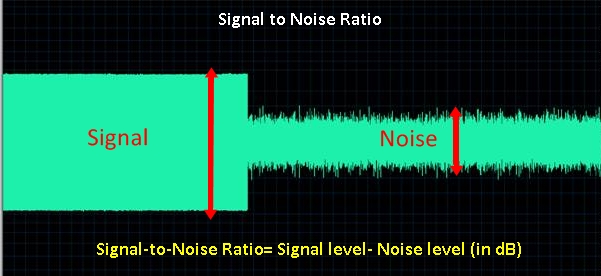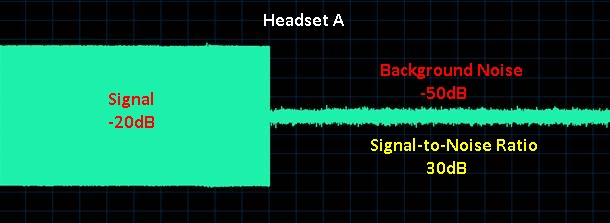What is Signal to Noise Ratio?

Signal to noise ratio is the ratio of level of the desired signal (such as speech, music, etc.) that a microphone records compared to the level of noise that it picks up from the background.
The desired signal, which can be speech, music, etc. is the sound that a user wants recorded by the microphone. Thus, we want the microphone to record this signal loudly. The noise in the background, which can be the roar of an airplane, the humming of an air conditioner, etc. is undesired and we want the microphone to record as little of this signal as possible. Thus, a microphone device with a high signal recording and a low noise recording is desired.
Signal to noise ratio is calculated by taking the level of the desired signal and subtracting from it the level of the noise signal. Thus, the higher the value of the signal to noise ratio, the better the microphone, because the greater the desired signal that it records or the less noise that it picks up. This is all expressed in decibels (dB).
We’ll take a look now at a headset as a way to see an example:

Here we look at Headset A: Headset A records the desired signal at -20dB and it records the noise in the background at -50dB. Thus, the signal to noise ratio is Signal Level-Noise Level= -20dB – (-50dB)= 30dB. Headset A has a signal to noise ratio of 30dB.
Signal to noise ratio will always be a positive number unless the microphone device records more noise than it does desired signal, which would be an awful microphone. Most microphone devices come with datasheets that give a signal-to-noise specification of the unit. Normally, good headsets have signal to noise ratios of 60dB or above, with superb noise-cancelling headsets having signal to noise ratios of 100dB or greater.
Related Resources
What is Microphone Sensitivity?
What is Microphone Directionality?
What is Microphone Frequency Response?